There is a lot of cultural and traditional meaning behind mehndi, the ancient art of drawing illustrations on the skin with henna. Here is a complete guide to mehndi designs, covering everything from traditional Indian patterns to current fusion styles. Get ready to explore the stunning realm of henna art!
Different kinds of mehndi designs and styles:
Traditional Indian Mehndi Designs:
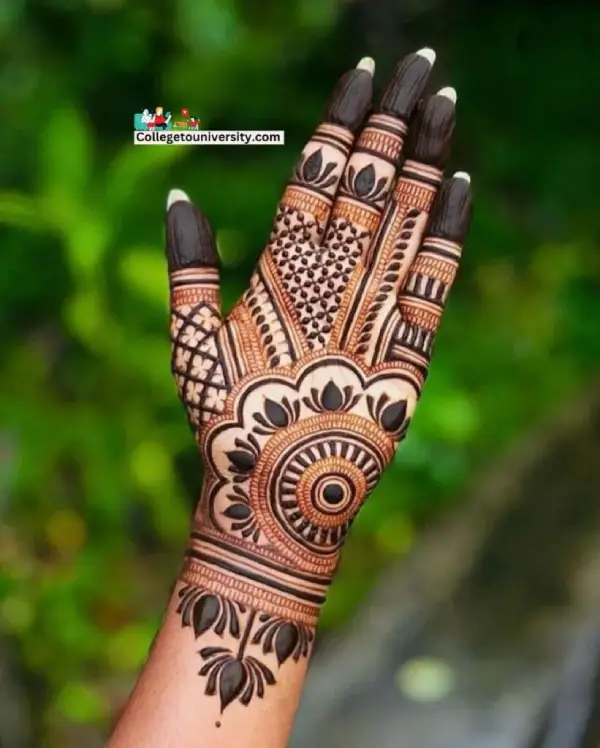


Peacocks, elephants, paisleys, flowers, and religious symbols are just a few of the complex patterns that can be found in traditional Indian mehndi designs. They usually go all the way around the hands and feet and have lots of small features and fine lines. Another simple Mehendi design
Designs in Arabic Mehndi:
Designs in Arabic mehndi are known for their thick, flowing lines and use of empty spaces. Most of the time, they have floral patterns, leafy vines, and geometric forms. Arabic designs usually focus on making the hands look beautiful while leaving the tips of the fingers bare.

Pakistani Mehndi patterns:
The patterns used in Pakistani mehndi are a mix of Indian and Arabic styles. They have a mix of complicated patterns and strong, clear lines. Pakistani designs often have peacocks, flowers, and net-like patterns that are very complicated.

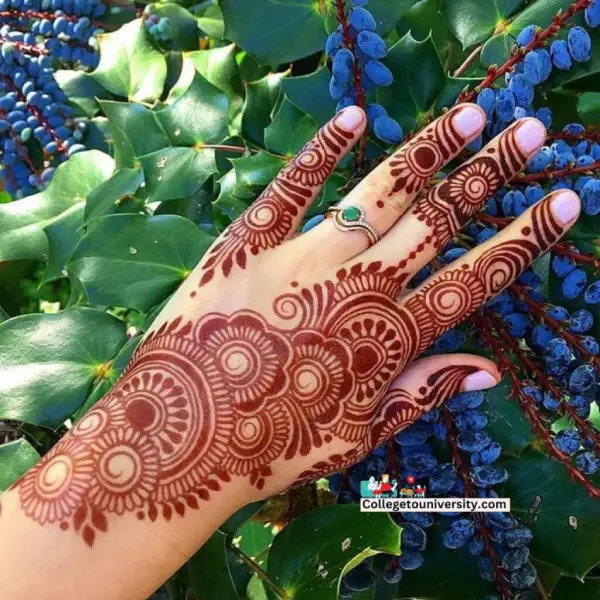
Moroccan Mehndi patterns:
The geometric and abstract art of Morocco has an effect on the mehndi patterns which are made there. They show off circles, squares, triangles, and other geometric shapes. The styles from Morocco often look modern and symmetrical.

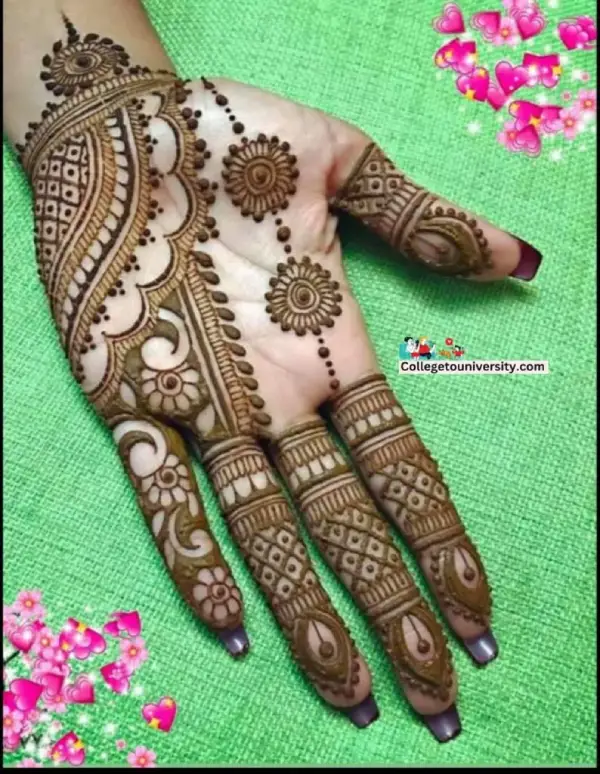
Fusion Mehndi Designs from India and the West:
Indo-Western fusion mehndi designs take parts from different styles and put them together to make new, unique patterns. Mandalas, feathers, and dreamcatchers are some of the modern designs that they use along with traditional ones.

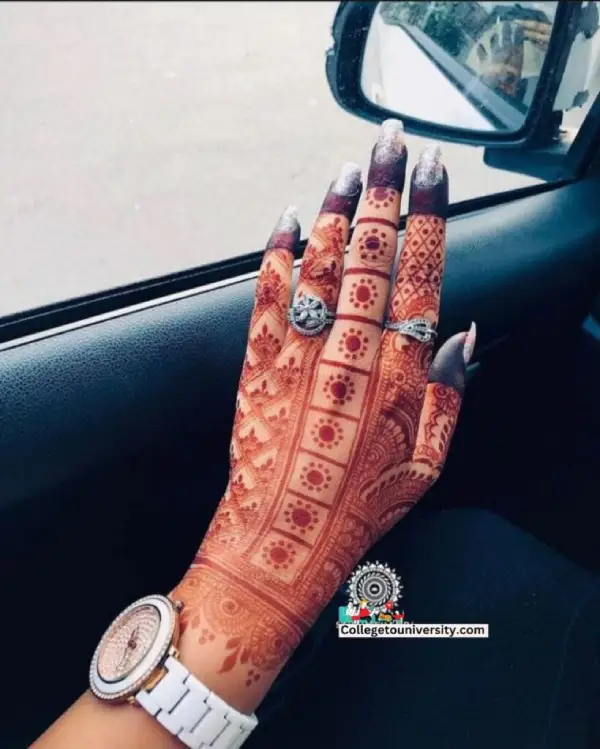
Popular themes for mehndi designs:
Flower and Paisley Mehndi patterns:
Flower and paisley mehndi patterns are tried-and-true favorites. They have very small, delicate designs that look like flowers, leaves, and paisleys. These styles are very classy and elegant.
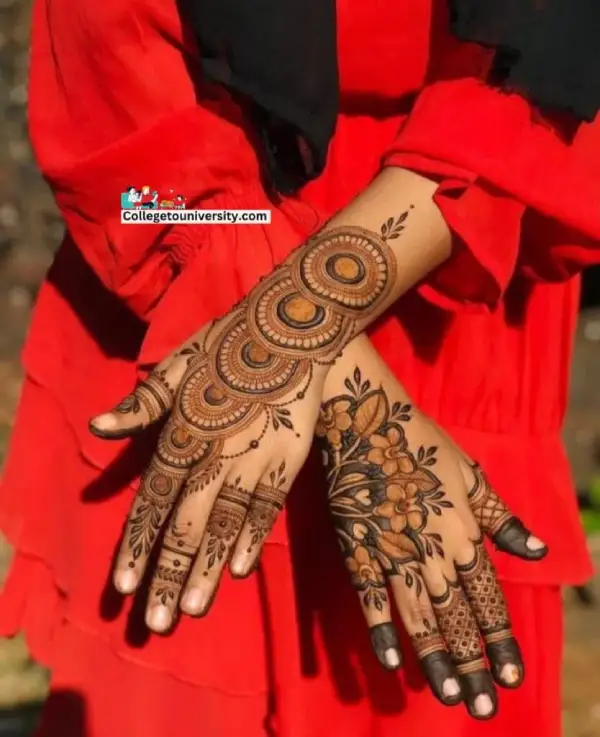
Abstract and Geometric Mehndi Designs:
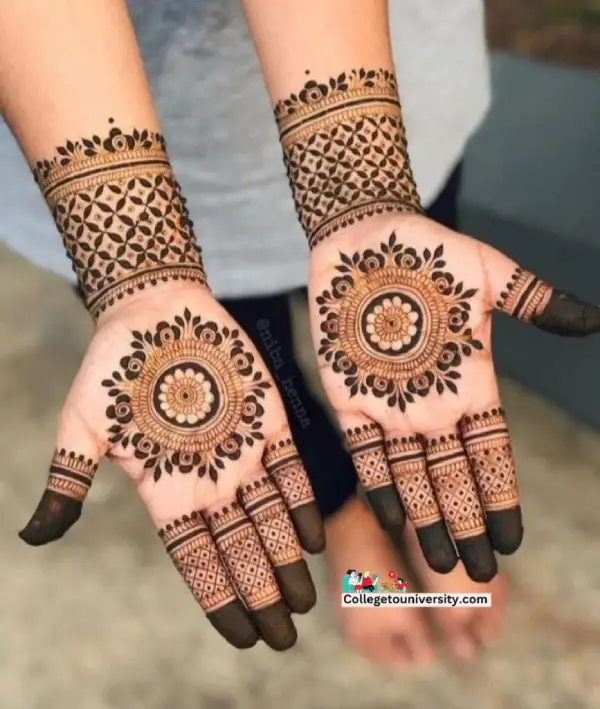
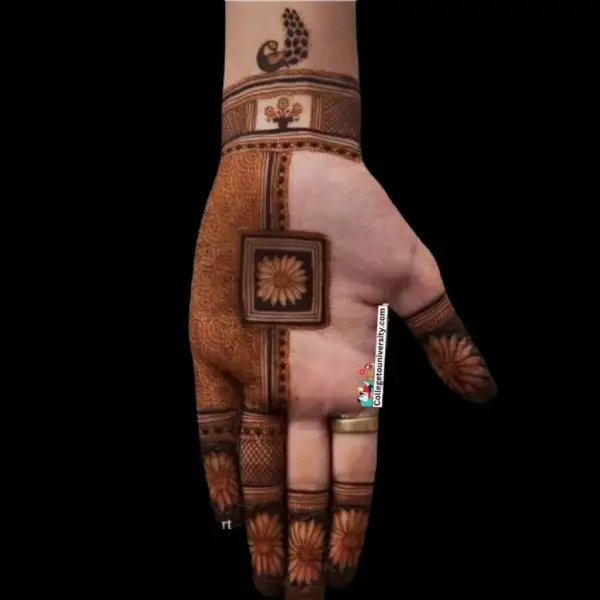
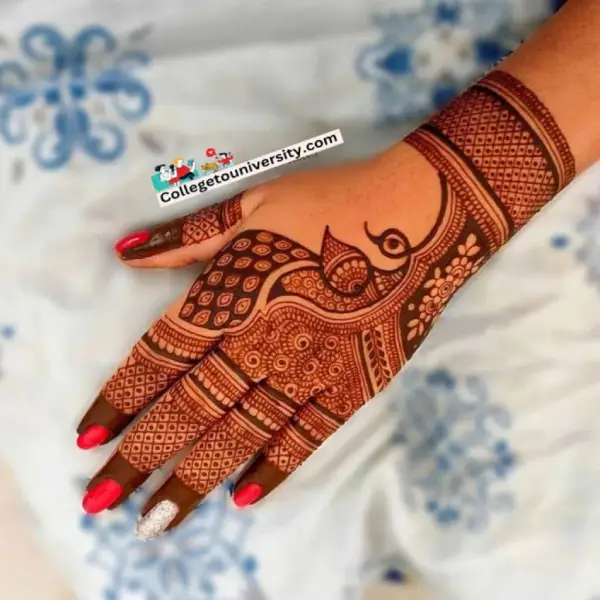


Both abstract and geometric mehndi designs use straight lines, forms, and patterns. Asymmetrical and symmetrical designs are often used together to give them a bold and modern look.
Bridal Mehndi Designs:
Designs for bridal mehndi are very detailed and cover the hands, arms, feet, and legs. To honor the wedding, they often use elaborate patterns, peacocks, bride and groom designs, and other symbolic elements.
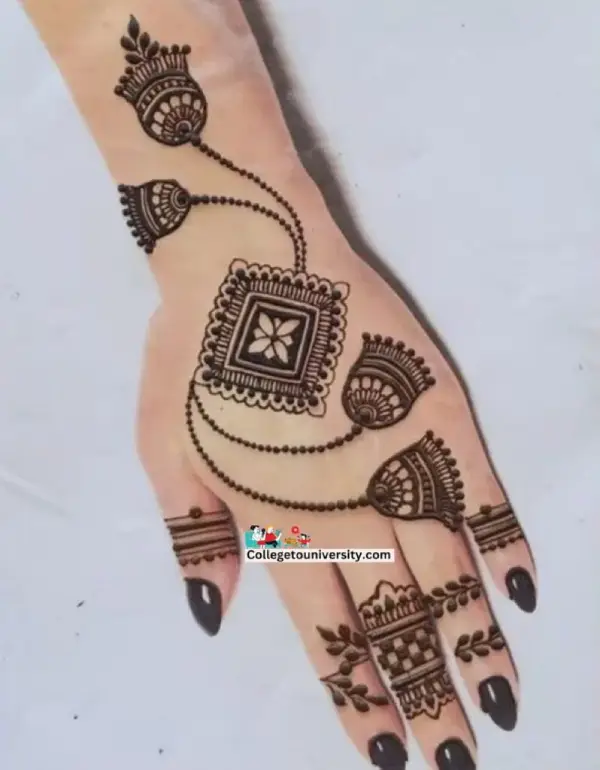
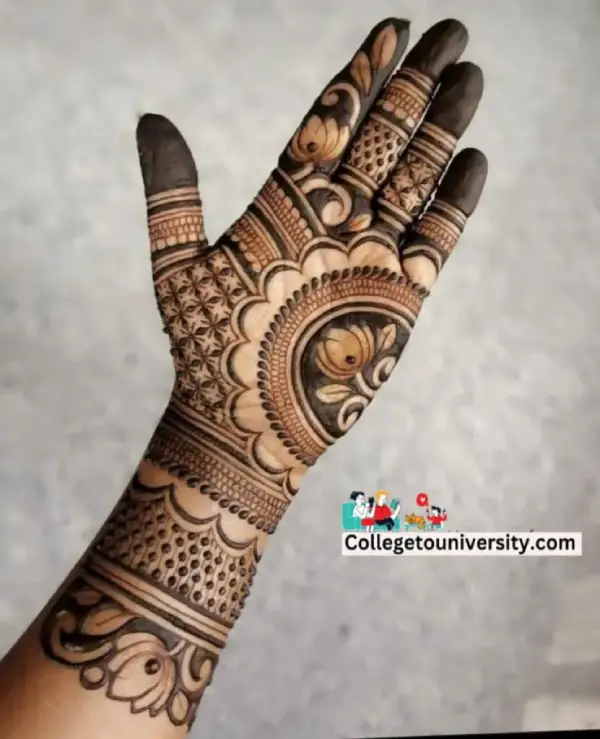


Mehndi Designs That Are Simple and Up-To-Date:

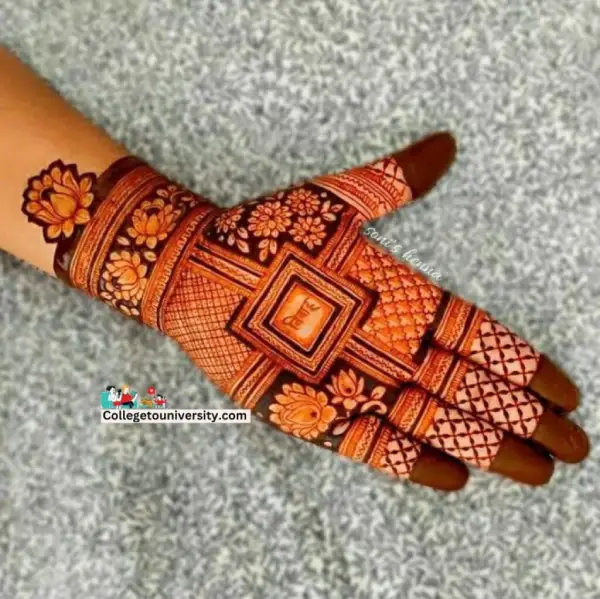
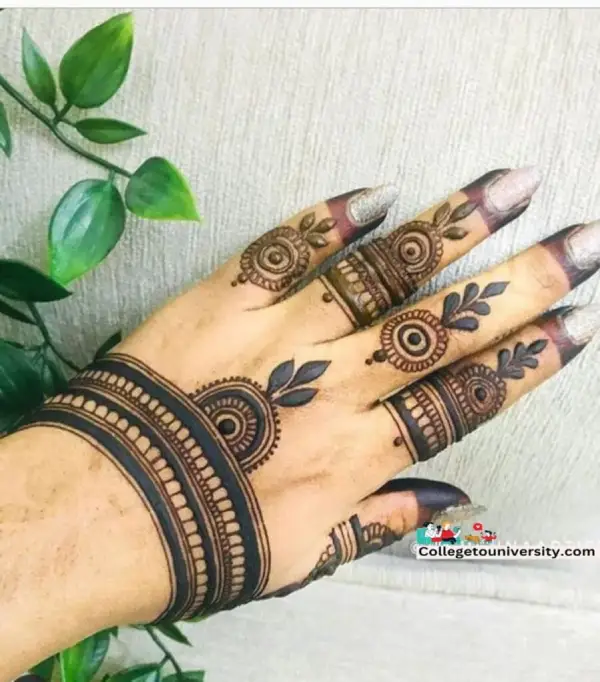
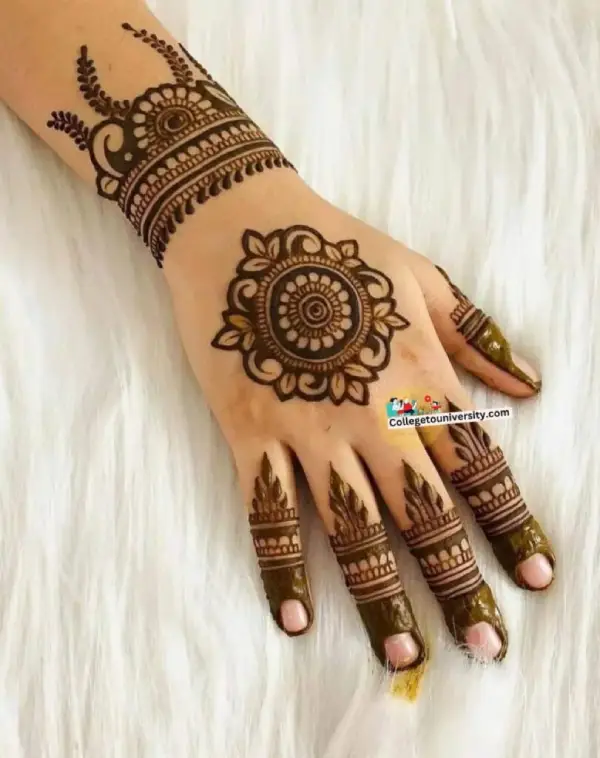
Modern and minimalist mehndi designs focus on keeping things simple and having straight lines. They have simple patterns, geometric forms, and empty space. These styles are great for people who want to look modern and understated.
Festival and Occasional Mehndi Designs:
These are mehndi designs that are made for holidays like Eid, Diwali, and other cultural events. A lot of the time, they have religious symbols, traditional designs, and complicated patterns that show how happy and celebratory the event is.
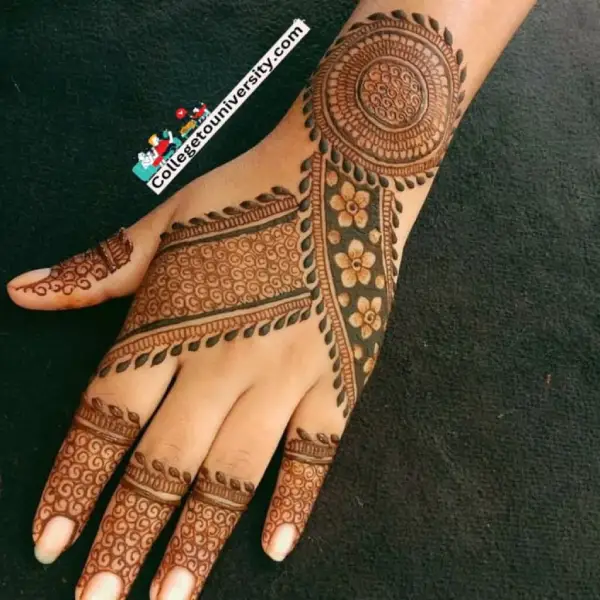

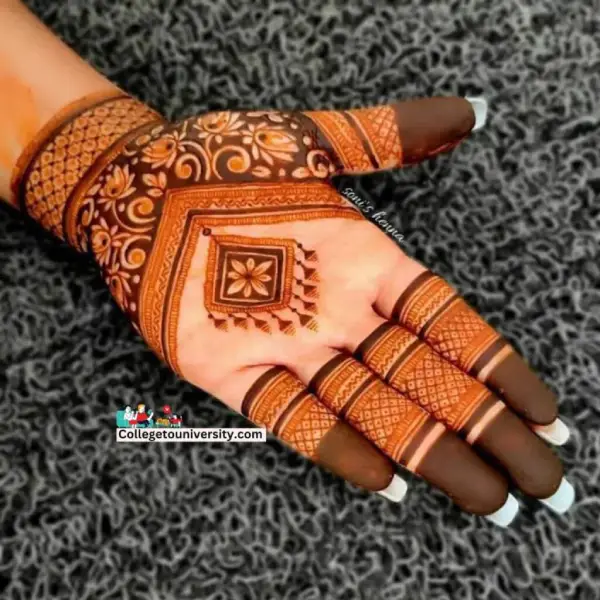


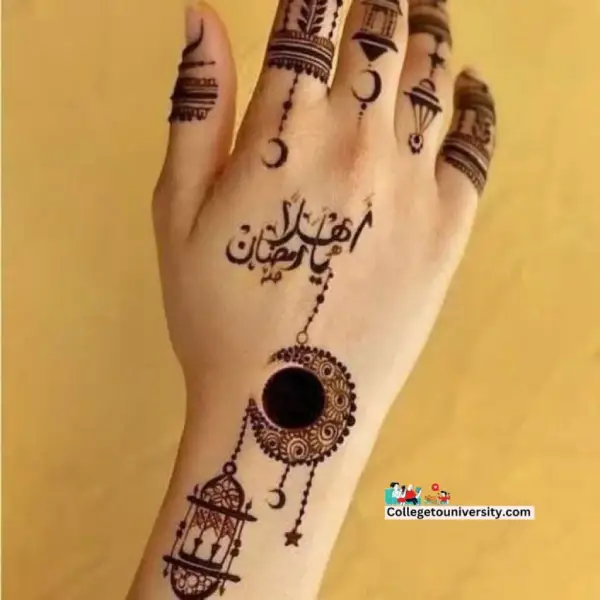
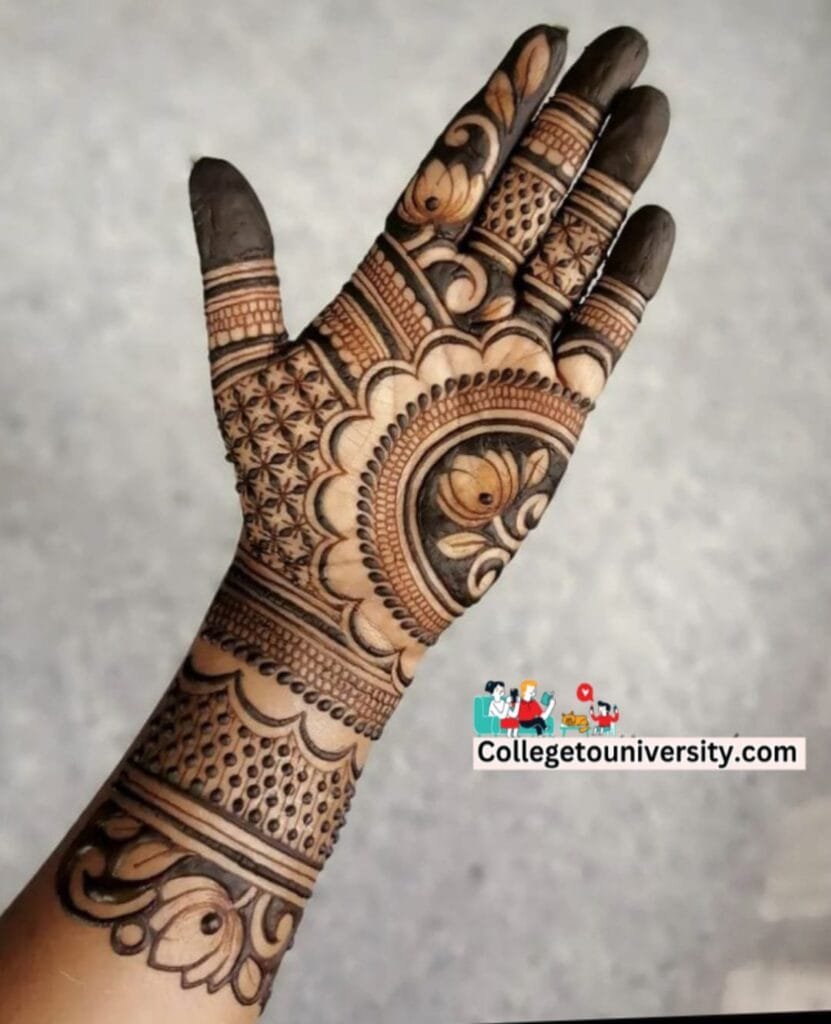
There are a lot of different types of mehndi designs and common design themes for people to choose from, depending on their personal style and the event for which they are applying glitter.
Techniques for Applying on Mehndi:
Steps for Basic Mehndi Application:
To do basic mehndi application, you need to make the mehndi paste, shape it into a cone, and put the pattern on your skin. Usually, the steps are to clean the skin, choose a design, apply the mehndi paste, wait for it to dry, and then peel off the dried paste to see the design.
Mehndi Designs and Methods With Lots of Details
It takes more skill and practice to do intricate henna designs. They involve using different tools, like lines, dots, shading, and layering, to make intricate patterns. Filling, jaali (net-like patterns), and khafif (fine outlines) are some of the methods artists use to give their designs more depth and complexity.
Tips for Making Designs That Are Clean and Accurate:
To get clean and accurate mehndi designs, you need to learn how to control how much pressure you put on the cone, keep your hands steady, and move from one part to the next in a planned way. To get better at precision, you can also use design models, practice on paper or practice boards, and rest your hands by taking breaks.
Frequently asked questions (FAQs) about mehndi designs:
Q: What is mehndi?
A: Mehndi, also known as henna, is a natural dye made from the leaves of the henna plant. It is used to create intricate designs on the skin, typically on the hands and feet.
Q: How long does mehndi take to dry?
A: The drying time for mehndi can vary depending on factors such as the thickness of the applied paste, humidity, and temperature. On average, it takes about 2-6 hours for mehndi to dry completely.
Q: How long does mehndi color last?
A: The longevity of mehndi color varies from person to person and depends on factors such as skin type, body temperature, and aftercare. Generally, mehndi color lasts for 1-3 weeks.
Q: How can I make my mehndi color darker?
A: To achieve a darker mehndi color, you can try the following tips:
- Leave the mehndi paste on for a longer duration before scraping it off.
- Keep the mehndi area warm after application by wrapping it with plastic or using heat (e.g., a hot towel).
- Apply a lemon-sugar mixture or a natural balm containing essential oils like eucalyptus or lavender on the dried mehndi.
Q: Can I apply mehndi on any part of my body?
A: While mehndi is commonly applied to the hands and feet, you can apply it to other parts of the body as well. However, it’s important to consider the sensitivity of the skin and ensure that the design is suitable for the chosen area.
Q: How long does it take to apply mehndi?
A: The time taken to apply mehndi depends on the complexity of the design and the skill of the artist. Simple designs can be completed in 30 minutes to an hour, while intricate bridal designs can take several hours.
Q: Can I use black henna for mehndi designs?
A: It is not recommended to use black henna as it often contains harmful chemicals such as para-phenylenediamine (PPD), which can cause severe allergic reactions and skin damage. It is safer to use natural, pure henna for mehndi designs.
Q: How can I remove mehndi stains from my skin?
A: Mehndi stains fade naturally over time as the skin exfoliates. However, you can try the following methods to expedite the removal process:
- Rubbing the stained area with olive oil or coconut oil.
- Soaking the area in warm water and gently scrubbing with a loofah or exfoliating glove.
- Applying a paste of baking soda and lemon juice on the stained area and rinsing it off after a few minutes.
Q: Can I get mehndi done if I have sensitive skin or allergies?
A: If you have sensitive skin or allergies, it’s essential to exercise caution. Conduct a patch test by applying a small amount of mehndi paste on your skin and observing for any adverse reactions before proceeding with a full design.
Q: Can I sleep with mehndi on?
A: It is generally recommended to keep the mehndi paste on for at least 4-6 hours or overnight to allow for optimal color development. However, it’s essential to protect the design during sleep by covering it with tissue paper or wearing cotton gloves to prevent smudging.
To do mehndi,
You need henna powder, mehndi cones, applicator tips, mehndi or eucalyptus oil, and pattern templates. It takes time to get good at applying henna. You start with simple steps and work your way up to more complicated patterns. It is possible to make designs that are clean and precise with experience. People can let their imagination run wild and make beautiful mehndi designs by trying out the different tools, methods, and design elements.








